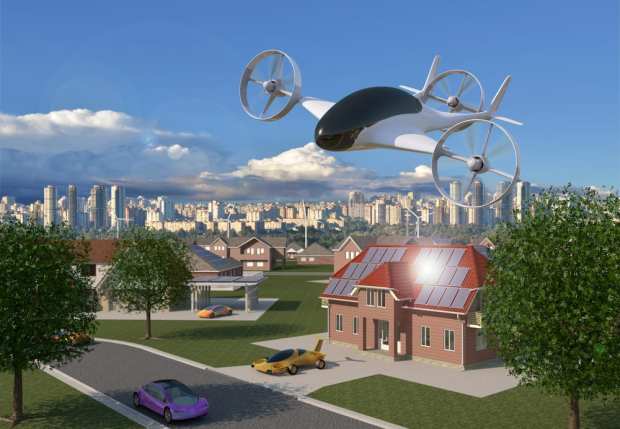Are Flying Cars The Future Of Ridesharing?

When most people talk about the high-tech future of ridesharing, they are generally talking about self-driving vehicles as the next logical great leap forward.
Most people, but not quite everyone. For Munich-based firm Lilium, thinking about autonomous vehicles is thinking too small. When the folks at Lilium think about the future of ridesharing, they tend to think the sky’s the limit.
Literally.
Lilium builds flying cars.
Though “car” may not be quite the right word — what Lilium is building bears very little resemblance to the flying DeLorean seen in the “Back To the Future” movies.
What Lilium, founded in 2015, has built is more specifically a “vertical take-off and landing vehicle, and it doesn’t look very much like a car at all,” according to Lilium Co-Founder and CEO Daniel Wiegand. “It looks quite a bit like a very small airplane created by Apple’s design team.”
The world got its first look at the Lilium design last week — an all electric five-seat prototype powered by 36 jet engines. It has wings, but it doesn’t have a tail, rudder or propellers because the machine is designed to take off and land vertically, thus making it suitable for short trip travel (as it does not require and airstrip to land).
“In less than two years we have been able to design, build and successfully fly an aircraft that will serve as our template for mass production … Moving from two to five seats was always our ambition as it enables us to open up the skies to many more travelers,” Wiegand noted in an email.
The plain can fly for about 60 minutes (or 185 miles) on a single charge, a distance Lilium claims is about comparable to an electric car. The goal, according to Lilium, is simple if unprecedented — to create for the first time “urban air mobility.” The fact that the vehicle comes with five seats, the firm says, makes it ideally suited to ridesharing arrangements.
Though the “flying car” does not need a full airstrip to land, it cannot quite plop riders down anywhere. Instead, users interested in booking some aerial flight-sharing in the future will be able to use the Lilium app to locate theoretical “landing pads” nearby. And though one might expect this will be a premium travel mechanism for those willing to spend insane amounts to get someplace fast, Lilium claims the trips will be comparable in price to a conventional taxi cab, just four times as fast. The firm has not, however, released any pricing information as of yet.
And as of now, it is not clear where it intends to launch, though the company does say that an announcement is coming soon. The plan is to see the firm up and fully operational by 2025 — although “trial services” will start earlier than this in several locations.
The idea can seem a bit out of the box, but it should be noted that Lilium is far from alone in the quest — Uber, Airbus, Rolls-Royce Holdings (the aircraft engine manufacturer, not the luxury car brand) and Volocopter are all working in some capacity to create the flying cars of the future. Uber has announced it intends to launch its network by 2020 in Dubai and Dallas.
Kitty Hawk, founded by Google Co-Founder Larry Page, is already offering consumers test rides.
Will flying cars take off for all? Maybe. Consumers are certainly excited about them, and boosters note that they could be a major solution to ground congestion. But there are technical issues still to be sorted. While the Federal Aviation Administration (FAA) doesn’t require those who pilot ultralight aircraft (of the type all these inventions are) to have a pilot’s license, there are limits to that. First they can’t fly at night. Second, they need to stay in open areas, which cityscapes are certainly not. Third, they are only allowed to fly for sport and recreation — not commercial purposes. And fourth, even if the FAA would allow it, it is hard to imagine great consumer enthusiasm for accepting rides from unlicensed pilots.
That means aerial drivers really could not quite be the standard gig worker — and recruiting could be a bit challenging.
It also remains to be seen how air space could me managed in urban areas in a theoretical world where flying cars are buzzing about.
But Lilium says figuring out those logistics are what the next five years are for — and that consumer demand will win the day here in assuring these types of business take off, so to speak.
